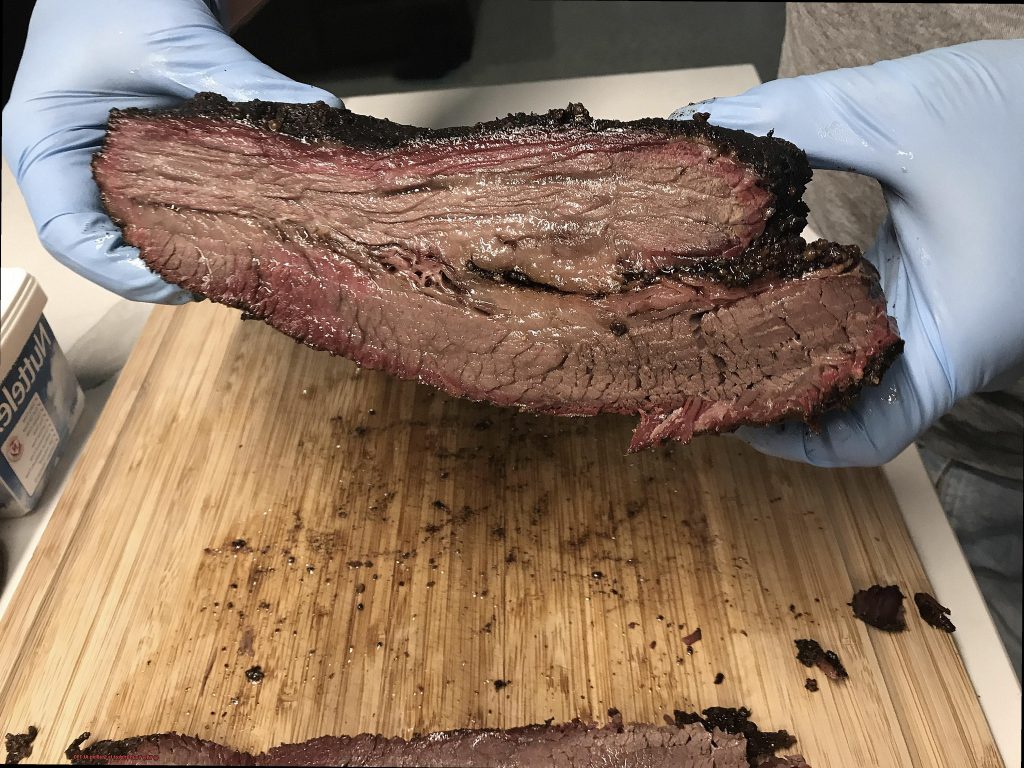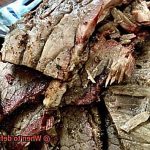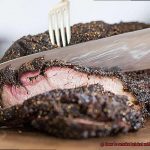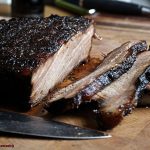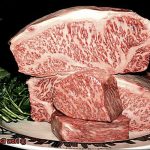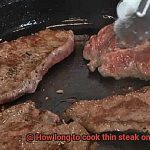Brisket, the king of barbeque meats, is a fan-favorite for its deliciously rich and savory flavor.
However, even the most experienced pitmasters can face a frustrating predicament when their brisket stalls at 190 degrees. It’s like hitting a brick wall – hours pass by with no sign of progress.
But don’t throw in the towel just yet. There are several reasons why this happens and fortunately, there are solutions to get your brisket up to temperature.
In this post, we’ll deep dive into the likely culprits behind your stalled brisket and provide you with some helpful tips to overcome this hurdle. From understanding how smoke affects temperature readings to the crucial role of enzymatic breakdown in cooking, we’ve got you covered.
Whether you’re a novice griller or a seasoned pro looking to elevate your cooking game, read on to discover how to conquer the infamous brisket stall once and for all.
Contents
What is the Brisket Stall?
Then you know the importance of understanding the elusive phenomenon known as the brisket stall. This natural occurrence happens during the slow-cooking process, and it can be frustrating to wait for your meat to reach its desired internal temperature. But don’t worry, we’ve got you covered. Let’s dive into what causes the stall and how to power through it like a pro.
The brisket stall typically occurs when the internal temperature of the meat reaches around 160-170 degrees Fahrenheit. At this point, the moisture inside the meat begins to evaporate, which causes the temperature to plateau or even drop slightly. But this is where the magic happens. During this time, the connective tissue in the meat is breaking down and becoming more tender, resulting in a more flavorful and juicy final product.
To get through the stall, there are several methods you can use. One popular technique is wrapping your brisket in foil or butcher paper once it reaches an internal temperature of around 160-170°F. This helps trap moisture inside the meat and speeds up the cooking process. Using a water pan in your smoker or grill can also add moisture to your cooking environment and prevent stalling.
But if you prefer to let nature take its course, you can simply wait it out and let the meat continue to cook at a steady pace. Just remember that once the moisture has evaporated from the surface of the meat, and its internal temperature reaches around 203°F, the stall will break. At this point, you’ll see a sharp rise in the internal temperature of your brisket, and it will continue to cook until it reaches your desired doneness.
While the brisket stall may seem daunting, rest assured that it’s actually an essential part of achieving a mouth-watering final product. So embrace the stall, fellow pitmasters. Try out these techniques and experiment until you find the perfect method for you.
Why Does the Brisket Stall Occur?
This frustrating period is known as the brisket stall, or plateau. It typically occurs around 150-170°F and can last for several hours. But why does this happen?
One widely accepted theory is evaporative cooling. As the brisket cooks, moisture is released from the meat and evaporates on the surface. This process cools down the meat and counteracts the heat from the smoker or grill, causing the internal temperature to plateau. It’s similar to how sweating cools us down on a hot day.
Another theory is that collagen, a tough connective tissue in the meat, breaks down during cooking and turns into gelatin. This process requires heat and time, which could cause a temporary plateau in temperature rise. It’s like waiting for Jell-O to set in the fridge.
There are ways to deal with the stall. One method is to wrap the brisket in foil or butcher paper when it reaches around 160°F. This helps retain moisture and prevent evaporative cooling from occurring. Another option is to simply wait it out until the brisket reaches its desired temperature, which could take several more hours.
Embrace the stall – it’s a natural part of the cooking process that helps break down connective tissue for a more tender and flavorful final product. Whether you choose to wrap your brisket or wait it out, remember that the end result will be worth it.
How to Minimize or Avoid the Stall
It’s the dreaded moment in brisket cooking when you feel like your meat has just given up on you. But fear not, my fellow pitmasters. There are several ways to minimize or even avoid the stall altogether.
Wrap it up
Wrapping your brisket in foil or butcher paper once it reaches an internal temperature of around 160°F can be a game-changer. The wrap helps to retain moisture and heat, which can speed up the cooking process and prevent the stall from happening. Think of it as a warm and cozy blanket for your brisket.
Turn up the heat
Sometimes, all your brisket needs is a little push to power through the stall. Increasing the cooking temperature can help do just that. However, be careful not to go too high as this may result in tough and dry meat.
Be patient
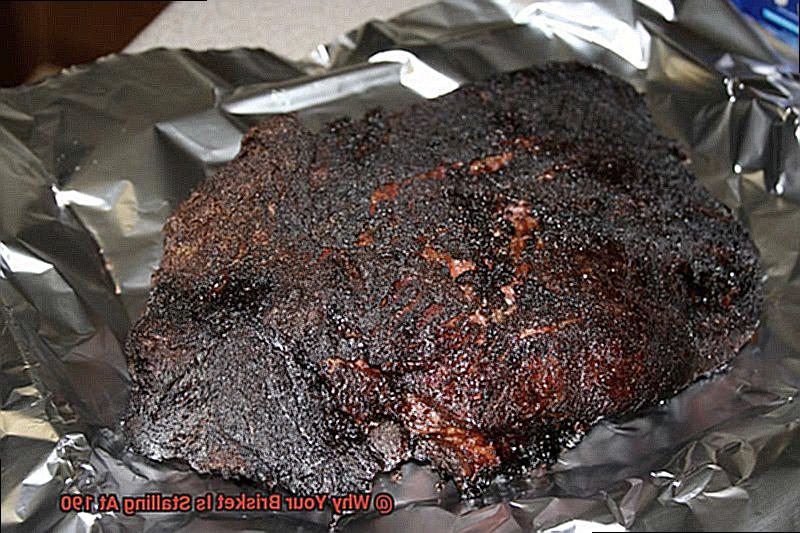
Patience is a virtue, especially when it comes to avoiding the stall. A steady and consistent cooking temperature will help prevent any sudden drops in temperature that can prolong the stall. Trust the process and give your brisket the time it needs to reach that perfect melt-in-your-mouth texture.
Try the Texas Crutch
Some pitmasters swear by the Texas Crutch technique. After cooking, wrap your brisket in foil and place it in a cooler for several hours. This allows the meat to continue cooking and tenderizing without drying out. It’s like giving your brisket a little extra TLC.
Add some moisture
Using a water pan in your smoker or grill can create a more humid environment, which can also help prevent the stall. Just make sure to keep an eye on the water level and refill as needed.
By implementing these techniques, you can minimize or avoid the stall altogether and achieve perfectly cooked and tender brisket. So next time you’re smoking a brisket, don’t let the stall get you down. Take control and enjoy the delicious rewards of your hard work.
Wrapping Your Brisket
As a pitmaster, you know that cooking the perfect brisket requires patience and attention to detail. It’s not just about seasoning the meat and monitoring the temperature; it’s also about knowing when and how to wrap your brisket for the best results.
When the temperature of your brisket stalls at around 190°F, wrapping can help to overcome this issue. Wrapping your brisket with foil, butcher paper, or other materials can trap in moisture, speed up the cooking process, and break down tough connective tissues, resulting in a more tender brisket.
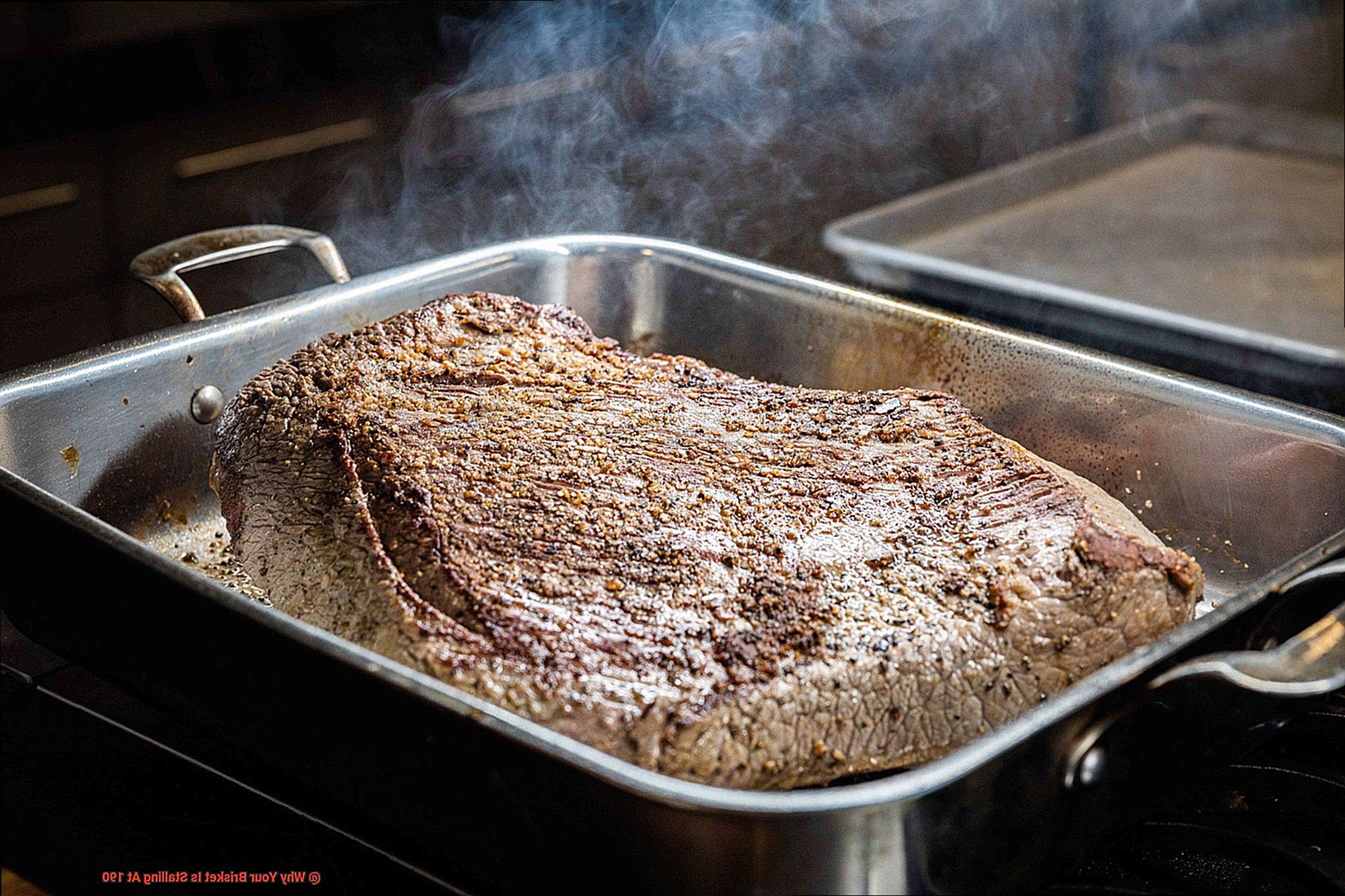
However, it’s important to understand how different materials affect the cooking process. Foil is a great option for a faster cooking time but may soften the bark on your meat. Butcher paper is a porous option that maintains a crispy bark while keeping your meat moist and tender.
Timing is also crucial when it comes to wrapping your brisket. Some pitmasters wrap their brisket after a few hours of smoking, while others wait until the internal temperature reaches around 160-170°F before wrapping. Experiment with different methods to find what works best for you.
If you want to add extra flavor and moisture to your brisket, consider trying the “Texas crutch.” This technique involves wrapping your brisket in foil with a small amount of liquid such as beef broth or apple juice.
Wrapping your brisket is an effective technique for achieving that perfect tender and juicy meat. Experiment with different materials and timing methods to find what works best for your taste preferences.
Using a Water Pan in Your Smoker/Grill
It requires patience, precision, and a few tricks up your sleeve. One such trick is using a water pan in your smoker or grill to prevent your brisket from stalling at 190 degrees Fahrenheit.
But what exactly does a water pan do? Think of it as your brisket’s personal humidifier. By adding water to the pan and placing it directly under your meat, you create a steamy environment that keeps your meat from drying out. This not only prevents it from stalling but also ensures that it comes out moist and tender.
However, it’s important to note that using a water pan isn’t always necessary. Some smokers and grills are designed to maintain consistent temperatures without it. So, experiment with your setup to find what works best for you.
When using a water pan, proper placement is key. Make sure to put the pan directly under the meat so that the moisture can reach your brisket. Additionally, keep an eye on the water level in the pan throughout the cooking process and add more as needed.
Using a water pan in your smoker or grill can be a game-changer when it comes to achieving that perfectly smoked brisket. So next time you fire up your smoker, don’t forget to give your brisket some much-needed hydration with a trusty water pan.
Breaking Through the Stall
The stall is a frustrating part of the cooking process where the internal temperature of the brisket seems to plateau or even decrease, despite being cooked for several hours. This can be caused by moisture evaporation as the brisket cooks, releasing moisture into the air and causing a cooling effect on the surface of the meat. But fear not, there are ways to overcome this and get your brisket cooking again.
One popular method to break through the stall is to wrap your brisket in foil or butcher paper. This will trap in the moisture and prevent further evaporation while allowing your meat to continue cooking at a steady rate. You can also add liquid to the foil or paper for extra flavor – beef broth or apple juice are great choices.
Another strategy is to increase the cooking temperature slightly. This will help overcome any cooling effect caused by moisture evaporation and keep your brisket cooking at a steady rate. But be careful not to increase the temperature too much, as this can lead to overcooked and dry meat.
By understanding why the stall happens and using simple strategies like wrapping your brisket in foil or increasing the temperature slightly, you’ll be able to cook up a mouthwatering meal that will leave your guests begging for more. Breaking through the stall is an essential step in cooking a delicious brisket.
bMd4ZXDvOho” >
Conclusion
To sum it up, the brisket stall is a crucial step in creating that delectable final product. When the meat’s internal temperature reaches 160-170°F, moisture evaporates, causing the temperature to plateau or drop slightly. However, this is when connective tissue breaks down, making the meat more tender and flavorful.
Thankfully, there are ways to overcome the stall. You can wrap your brisket in foil or butcher paper at around 160-170°F to trap moisture and speed up cooking. A water pan in your smoker or grill can also add moisture and prevent stalling.
If you’re patient, you can wait for the stall to pass naturally. As soon as surface moisture evaporates and the internal temperature hits around 203°F, you’ll see a significant rise.
By using these techniques – like wrapping your brisket with foil or adding a water pan – you can reduce or avoid stalling altogether and end up with perfectly cooked and tender brisket.

